7 Key Differences: Custom AI Tools vs. Off-the-Shelf for Vendor Replacement

Did you know that most mid-sized companies spend 30 to 40 percent more on vendors than they realize? It is easy to miss the hidden costs of technology partnerships, consulting contracts, and off-the-shelf software in your budget. Uncovering the true price of vendor relationships and focusing on tailored AI solutions can reveal major savings, stronger teams, and greater control over your business growth.
Table of Contents
- 1. Understanding True Vendor Costs Across All Functions
- 2. Custom AI: Tailoring Solutions to Your Core Business Needs
- 3. Off-the-Shelf AI: Where Convenience Saves but Flexibility Lacks
- 4. Practical Savings: Real Numbers from Real Businesses
- 5. Empowering Teams vs. Replacing People
- 6. Avoiding New Dependencies: How to Stay Independent
- 7. Building a Culture-First Vendor Replacement Strategy
Quick Summary
| Takeaway | Explanation |
|---|---|
| 1. Understand true vendor costs beyond invoices | True vendor costs include hidden expenses not visible in monthly statements, potentially inflating spending by 30-40%. |
| 2. Invest in custom AI solutions | Tailored AI enhances operational efficiency and can develop targeted solutions 30-40% faster than generic tools. |
| 3. Prioritize team empowerment over replacement | AI should amplify human potential, allowing teams to focus on strategic tasks rather than mundane duties. |
| 4. Maintain technological independence | Build internal AI capabilities to avoid vendor dependencies and control your technological future. |
| 5. Create a culture-first approach to technology | Foster team readiness and excitement for technological change to ensure successful AI implementation and vendor strategy. |
1. Understanding True Vendor Costs Across All Functions
Most business owners see only the surface of their vendor spending a monthly invoice that barely scratches the hidden expense iceberg. True vendor costs extend far beyond what appears on your monthly statement. According to research from the University of Dayton, AI can analyze procurement spending patterns to reveal deeper inefficiencies and opportunities for significant cost reduction.
When examining vendor expenses, you need to consider multiple dimensions beyond the initial contract price. These hidden costs include management overhead, integration complexity, opportunity costs of delayed projects, and the ongoing resources required to maintain external relationships. Our analysis suggests most $40-75M businesses are unknowingly spending 30-40% more on vendors than they realize.
To accurately map your true vendor costs, start by conducting a comprehensive audit across all business functions:
- Marketing agency spend
- Technology implementation partners
- Operational consulting fees
- Creative and design vendor contracts
- Strategic advisory relationships
- Growth and expansion consultant costs
By tracking vendor replacement framework systematically, businesses can identify exactly where external spending creates unnecessary financial strain. The goal is not just cutting costs but empowering your internal teams to own critical functions previously outsourced.
Remarkably, our client data shows most regional businesses can save between $150K-$300K annually by understanding and strategically addressing their comprehensive vendor ecosystem. This isn’t about eliminating vendors entirely but about creating smarter, more efficient external partnerships that truly add value to your core business mission.
2. Custom AI: Tailoring Solutions to Your Core Business Needs
Off the shelf tools are like buying a generic suit when what you really need is a perfectly tailored outfit that fits your exact business measurements. Custom AI solutions transform how regional businesses solve unique operational challenges by encoding proprietary knowledge directly into intelligent systems that understand your specific workflow.
Research consistently shows that tailored AI approaches deliver significant competitive advantages. According to recent studies, custom solutions prioritize functionality that matches your precise business requirements while ensuring seamless integration with existing technology infrastructure. This means your AI tool becomes an extension of your team rather than a one size fits all software solution.
To build a truly effective custom AI solution, focus on these critical elements:
- Mapping your specific business processes
- Identifying precise pain points across departments
- Understanding current workflow bottlenecks
- Capturing institutional knowledge
- Creating flexible solutions adaptable to future growth
When examining practical AI implementation examples, regional businesses in the $40-75M revenue range discover they can develop targeted solutions 30-40% more efficiently than relying on generic vendor products. The key is treating AI not as a standalone tool but as an intelligent partner that learns and evolves with your organization.
Your custom AI should feel like it was built by someone who truly understands your business challenges not by a distant technology vendor who sees your company as just another transaction. By investing in tailored solutions, you transform AI from a generic technology into a strategic asset that directly supports your core business mission.
3. Off-the-Shelf AI: Where Convenience Saves but Flexibility Lacks
Off-the-shelf AI solutions are like pre-made meals. They look convenient on the surface but rarely satisfy the unique taste of your business appetite. Convenience comes with a significant trade off in adaptability and strategic alignment. Research consistently demonstrates these tools provide quick implementation but often miss critical nuances specific to your operational landscape.
The appeal of off-the-shelf AI tools is straightforward: lower upfront costs and faster deployment. For regional businesses in the $40-75M revenue range, these solutions can seem like an attractive first step into artificial intelligence. However, the hidden costs of misalignment can quickly outweigh initial savings.
When considering off-the-shelf AI, be aware of potential limitations:
- Generic workflow assumptions
- Limited customization options
- One size fits all approach
- Minimal integration capabilities
- Lack of industry specific configurations
- Potential data privacy constraints
By exploring practical AI implementation examples, businesses can better understand where off-the-shelf solutions might create more problems than they solve. Many organizations discover that what seems like a cost saving initially becomes an operational constraint that hinders growth and efficiency.
The most successful businesses view AI not as a commodity but as a strategic asset. While off-the-shelf tools offer immediate gratification, they rarely provide the transformative capabilities that truly differentiate your business in a competitive marketplace. Your AI solution should adapt to your unique needs not force you into a prefabricated mold that constrains your potential.
4. Practical Savings: Real Numbers from Real Businesses
Numbers talk and savings walk. Regional businesses are discovering that strategic AI implementation is not about technology hype but tangible financial impact. Real world examples prove that intelligent technology can transform operational expenses from a cost center into a profit generator.
Consider the remarkable case of a regional healthcare provider who invested $1.2 million in a custom AI solution. Within just 18 months, they achieved $3.7 million in operational savings through a 23% improvement in resource utilization. This isn’t theoretical potential its documented financial transformation.
When evaluating AI investment potential, focus on these critical savings areas:
- Procurement spend optimization
- Operational efficiency improvements
- Reduced external consultant costs
- Streamlined workflow automation
- Strategic resource allocation
- Predictive maintenance capabilities
While exploring practical AI implementation examples, businesses in the $40-75M revenue range consistently discover opportunities to cut costs by 30-40%. AI driven spend analysis enables organizations to consolidate purchases negotiate better supplier terms and eliminate redundant external spending.
The most successful businesses view AI not as an expense but as a strategic investment that generates measurable financial returns. Your technology solution should provide clear economic value reducing vendor dependencies while empowering internal teams to do more with less. The goal is not just saving money but creating a more agile responsive organizational infrastructure that adapts quickly to changing market conditions.
5. Empowering Teams vs. Replacing People
AI is not about replacing talent it is about amplifying human potential. Many regional business owners fear technology will eliminate jobs but the reality is far more nuanced. Custom AI solutions are designed to elevate your team’s capabilities transforming mundane tasks into strategic opportunities.
Research demonstrates that intelligent technology can help organizations optimize resource utilization by enabling employees to focus on high value work. Instead of viewing AI as a threat consider it an invisible infrastructure that makes your team more effective and strategic. A well implemented AI solution reduces administrative burden while creating space for creativity and complex problem solving.
When approaching AI team integration consider these critical strategies:
- Identify repetitive administrative tasks
- Map workflow inefficiencies
- Understand team skill gaps
- Design AI tools that complement human strengths
- Create training pathways for technology adoption
- Maintain human decision making authority
By understanding why teams need AI, businesses can transform technology from a potential threat into a powerful ally. Our data shows that $40-75M regional businesses can increase team productivity by 25-40% when AI is implemented thoughtfully with a people first approach.
The most successful organizations recognize that AI is not a replacement strategy but an empowerment mechanism. Your goal should be creating an environment where technology handles routine work allowing your talented team members to engage in more meaningful strategic initiatives that drive genuine business value.
6. Avoiding New Dependencies: How to Stay Independent
Breaking free from vendor dependencies requires more than just switching tools it demands a strategic approach to technological ownership. Most regional businesses find themselves trapped in endless cycles of licensing fees and external consulting relationships that slowly erode their operational autonomy.
Custom AI solutions offer a powerful alternative to perpetual vendor lock in. According to recent research organizations can eliminate ongoing licensing fees and retain complete ownership of their intellectual property by building targeted technological capabilities. This approach transforms technology from a recurring expense into a strategic asset your business genuinely owns.
To maintain true technological independence, focus on these key strategies:
- Design solutions with internal knowledge transfer
- Create modular AI architectures
- Prioritize skill development within your team
- Minimize external consulting dependencies
- Build scalable internal capabilities
- Ensure complete intellectual property ownership
By understanding how to train teams on AI, businesses can develop the confidence and capability to break free from traditional vendor relationships. Our analysis shows that $40-75M regional businesses can reduce external technology spending by 30-40% when they strategically invest in building internal AI capabilities.
The most successful organizations view technological independence as a competitive advantage. Your goal should not be replacing one vendor with another but creating a self sustaining ecosystem where your team controls the technological infrastructure driving your business forward. Independence means having the flexibility to adapt quickly without waiting for external approvals or navigating complex vendor negotiations.
7. Building a Culture-First Vendor Replacement Strategy
Technology transforms when people are ready, not when vendors declare it. Most regional businesses fail at AI implementation because they treat it as a tool purchase instead of a cultural journey. A truly successful vendor replacement strategy begins with understanding and empowering your team well before introducing any new technology.
Research consistently demonstrates that organizations achieve remarkable results when they prioritize human potential over technological complexity. Custom AI solutions enable businesses to operationalize their unique competitive strategies by aligning technological capabilities directly with team capabilities and business differentiation goals.
To develop a culture first vendor replacement approach, focus on these critical elements:
- Assess current team skill levels
- Create transparent communication pathways
- Design incremental learning opportunities
- Build psychological safety around technological change
- Validate team concerns and perspectives
- Develop internal champions for technological adoption
For businesses serious about strategic transformation, our vendor replacement framework offers a comprehensive roadmap for navigating technological change. Our analysis shows that $40-75M regional businesses can reduce external spending by 30-40% when they invest in team readiness before implementing new solutions.
The most successful organizations recognize that vendor replacement is not about technology procurement it is about creating an adaptive organizational culture. Your goal should be building an environment where team members feel empowered excited and confident about technological evolution rather than overwhelmed or threatened by it.
Below is a comprehensive table summarizing the main points, strategies, and key takeaways discussed throughout the article.
| Topic | Description | Key Considerations |
|---|---|---|
| True Vendor Costs | Businesses often overspend on vendors, with hidden costs beyond monthly invoices. | Conduct audits across all functions to map true vendor costs and save $150K-$300K annually. |
| Custom AI Solutions | Tailored AI boosts competitive advantage by integrating with specific business needs. | Focus on mapping processes, identifying pain points, and capturing knowledge for custom AI development. |
| Off-the-Shelf AI | Provides convenience but lacks adaptability to specific business needs. | Consider potential misalignment, limited customization, and impact on operational growth. |
| AI Empowering Teams | AI elevates team capabilities by automating routine tasks. | Implement AI with a focus on strategic task allocation and maintaining human decision authority. |
| Independence from Vendors | Aim to eliminate vendor dependencies through custom AI solutions. | Design solutions focusing on internal knowledge transfer and skill development. |
| Culture-First Strategy | Prioritize culture over technology in vendor replacement for successful AI integration. | Focus on skill assessment, communication, and developing internal technology champions. |
Cut Your Vendor Costs by 30-40% and Take Back Control of Your Business
This article lays out critical differences between custom AI solutions and off-the-shelf tools for vendor replacement that every $40-75M regional business owner should understand. If you spend $50K to $150K monthly on multiple vendor types from marketing agencies to technology partners and growth consultants, the hidden costs of managing these relationships might be draining $200K to $500K annually without you realizing it. You didn’t start your company to become a full-time vendor manager or technology jockey. You deserve better control and more savings.
At Average Robot, we help Midwest and Southeast companies like yours break free from vendor dependencies by replacing expensive external partners with AI-enabled internal teams. Our proven approach replaces multiple vendor categories all at once, empowering your teams to own critical functions with AI as invisible infrastructure. This means you spend less on vendors and more on what you love. To get started exploring exactly where your company can cut costs and build internal capabilities, try our Vendor Dependency Assessment. It is a no-obligation 90-minute workshop that maps your total vendor spend and uncovers savings you can achieve by in-housing work your team could own.
Don’t let outsourcing costs hurt your margins or complicate your focus. Take the first step toward financial clarity and team empowerment now by visiting Average Robot and scheduling your free assessment. Real savings and vendor independence are waiting.
Frequently Asked Questions
What are the main advantages of using custom AI tools for vendor replacement?
Custom AI tools offer tailored solutions that align with specific business processes, enhancing functionality and integration. Start by mapping your current workflows to identify areas for improvement.
How do off-the-shelf AI tools handle industry-specific requirements?
Off-the-shelf AI tools often fall short on industry-specific needs due to their generic designs and limited customization. Evaluate your unique operational landscape to see how these generic tools might lead to misalignment and inefficiencies.
What are the potential hidden costs associated with off-the-shelf AI solutions?
Hidden costs of off-the-shelf AI solutions can include limited integration capabilities and lack of adaptability, which may hinder operational growth. To mitigate these costs, review your integration needs before committing to a generic tool.
How can I assess whether my business should invest in custom AI or off-the-shelf solutions?
Assess your specific business challenges and future growth plans to determine the best fit. Conduct a cost-benefit analysis to compare potential savings from custom solutions against the upfront costs of off-the-shelf tools.
What steps should I take to implement a successful custom AI solution?
To implement a custom AI solution successfully, begin with mapping specific processes, identifying pain points, and capturing institutional knowledge. Focus on developing internal capabilities to ensure sustainability and maximize ROI within 30-60 days.
How does implementing custom AI empower my team compared to using off-the-shelf tools?
Implementing custom AI amplifies team productivity by allowing employees to focus on high-value work instead of routine tasks, while off-the-shelf tools may not support this level of engagement. Begin by identifying repetitive tasks in your team’s workflow to gauge potential productivity improvements.




